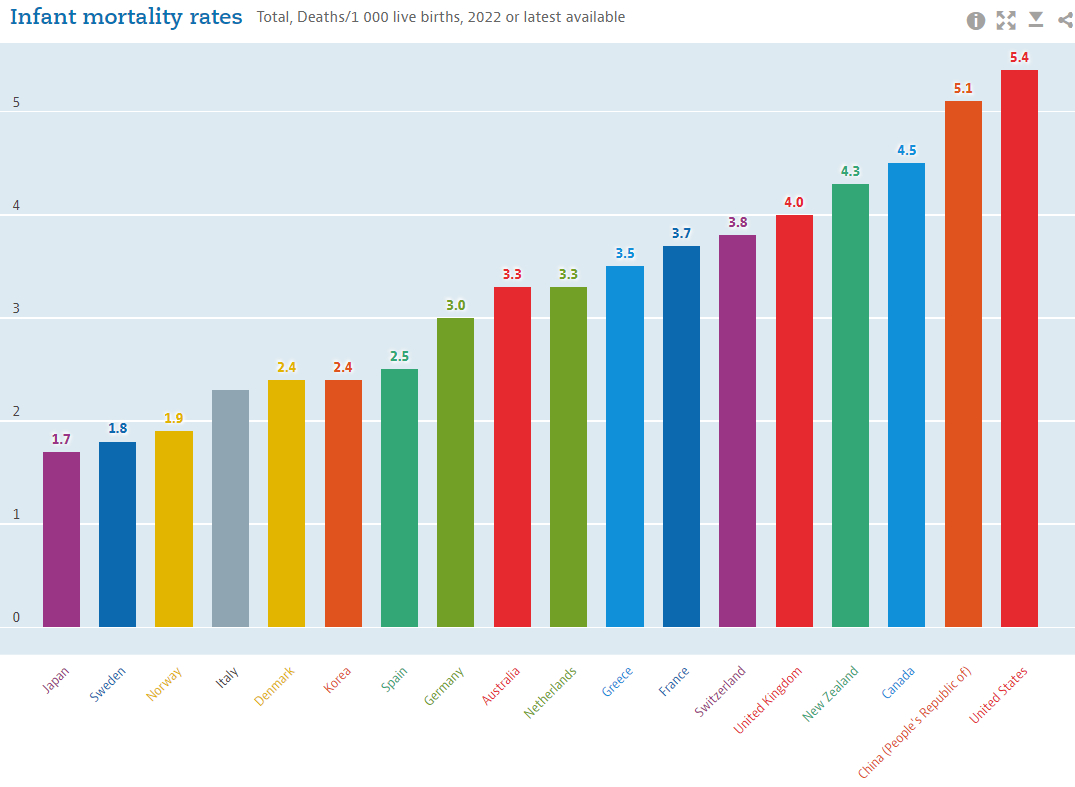Source: OECD, US statistics are from 2020 LINK
The Centers for Disease Control and Prevention released preliminary data in November showing that in 2022 infant mortality rose 3% to 5.6 infants per 1000 live births. This is in contrast to most developed countries, where infant mortality is 3 or fewer per 1000 live births.
The March of Dimes issued its annual report on preterm births, which shows that these remained essentially unchanged in 2022 (10.4% of all births, compared to 10.5% in 2021). Preterm birth was 1.5 times higher among Black birthing people compared to White people. Factors that the March of Dimes highlighted as risks include smoking (4.6% of births), hypertension (2.9%), obesity (34.3%), diabetes (1.2%), multiple births (3.2%) and previous preterm deliveries (3.9%).
The report points out that maternal mortality in the US has risen from 17.4 deaths per 100,000 (2018) to 32.9 deaths per 100,000 births (2021). Even though we spend $19,000 per delivery in the US, those giving birth today are more likely to die in childbirth than their mothers were.
Implications for employers:
- Employers can help improve maternal outcomes through:
- Benefit design, including affordable out-of-pocket costs, access to midwives and doulas, parental leave, and appropriate access to mental health services
- Requiring that medical carriers provide timely, accurate information to members and employers about provider quality and outcomes
- Advocating for value-based payment so that hospitals do not make higher margins from Cesarean section deliveries.
- Here’s an article I wrote published in Harvard Business Review (May, 2023) on what employers can do to make childbirth safer.
Thanks for reading. You can find previous posts in the Employer Coverage archive
Please “like” and suggest this newsletter to friends and colleagues. Thanks!
Tomorrow: At-home testing can empower patients and improve outcomes



